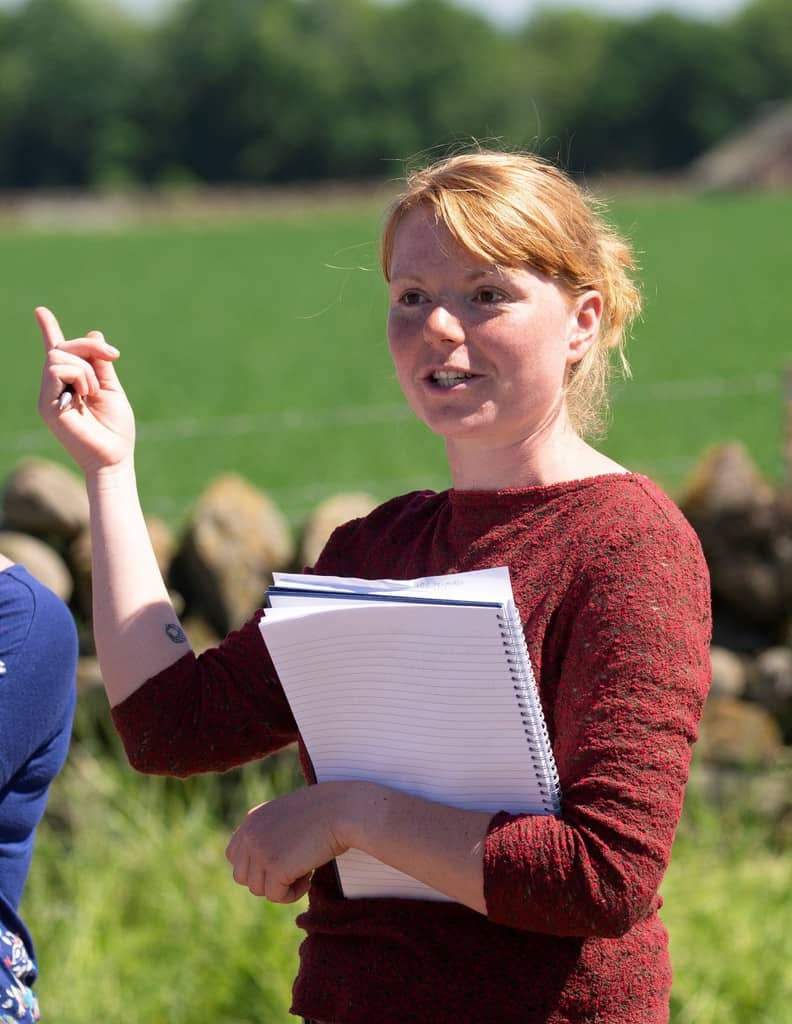The recent round of Quality Meat Scotland’s Better Grazing meetings focussed on the technical aspects of managing grazing to maintain grass quality throughout the season.
Speaking at five meetings throughout Scotland, Poppy Frater, grassland and sheep specialist with SAC Consulting, took livestock farmers through the principles of how to make the most of pasture quality.
“Grass is a relatively easy crop to grow, but a hard crop to manage well!” said Ms Frater.
She added: “There is no single recipe for good grazing management but having a good grasp of the fundamentals, the ‘nuts and bolts’ of pasture and its response to grazing management, will help deliver a successful grazing system to suit individual farms.”
Correct livestock nutrition is a strong driver of productivity and profitability and maintaining high quality, leafy pasture for as long as possible is the most cost-effective way of achieving good livestock performance.
“The main aim is to avoid the build-up of stemmy or dead material, therefore good grazing management is key to maintaining pasture quality,” said Ms Frater.
Comparing grass at different stages of maturity with common feedstuffs such as barley and straw, Ms Frater explained that young and leafy pasture is high quality with metabolizable energy (ME) of 12 to 12.5 MJ/kg dry matter (DM) which is approaching the ME of barley. Increasing amounts of stem reduces the quality, and dead leaf has an ME of about 8MJ, similar to straw. Managing grazing well therefore helps to keep pastures leafy and maintains quality.
“The higher the ME the better the daily liveweight gain,” said Ms Frater.
“A 30kg lamb on a field of 10ME grass will gain around 100g per day, however the same lamb on 12ME grass will gain 280g per day.”
At the meetings Ms Frater described a simple three week/three-day rotational grazing programme, to help livestock producers get more out of their grass. This involves shifting stock around eight paddocks; grazing each paddock for 3 days then resting for three weeks during the summer months.
She explained that the rest period is crucial to allow the grass to fully recover and regrow after being grazed. As grass growth changes throughout the season, that rest period needs to increase as growth slows.
The number of days stock graze each paddock for will affect how much grass is utilised.
“Daily stock movements optimise the grass utilisation at around 80-85% as stock have little opportunity for waste.
“Shifting every three days is more practical but utilisation then drops to 75-80%. Under set stocking, it is estimated that 50% of grass available is wasted.”
She emphasised however that farmers would have to be reactive to conditions and perhaps shut a paddock up for conservation in the spring when growth is too fast and was getting ahead of the stock.
Following each of the morning sessions, the group visited a local farm to see grazing management in action. The afternoon sessions also involved delegates trying their hands at grass budgeting.
“There are some great tools out there to help farmers budget and work out the most efficient and cost-effective way to utilise grass,” said Ms Frater.
“QMS have produced a Quick and Simple Grazing Planning spreadsheet and AHDB have produced a feed budget spreadsheet which helps predict average grass cover on a farm.”
Ms Frater urged farmers not to be put off by the technology and pointed out that most livestock producers already do much of the supply/demand balancing act already without realising it.
“Using the tools available and being more strategic is a good way for everyone to reduce costs and increase yield and quality.”
To download a free copy of the QMS Quick and Simple Grazing Planning spreadsheet visit www.qmscotland.co.uk/grazing





